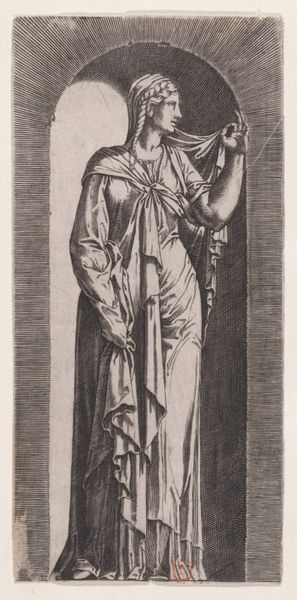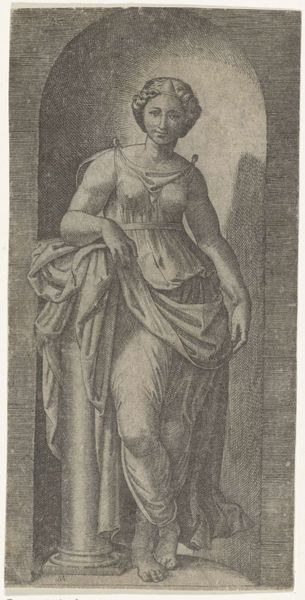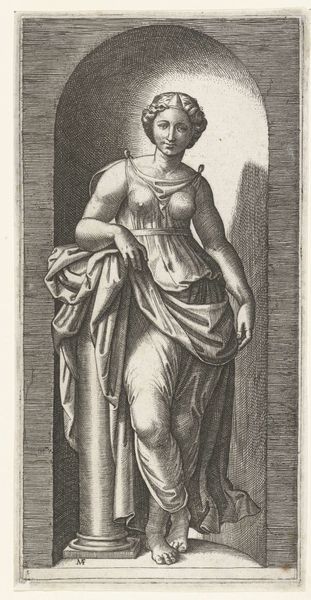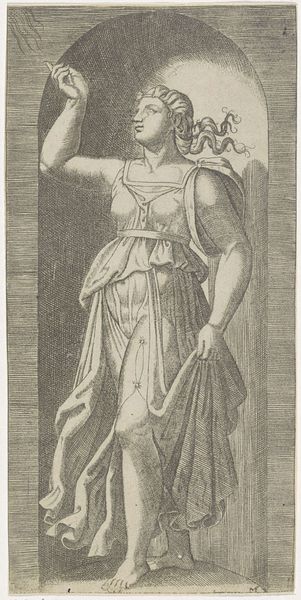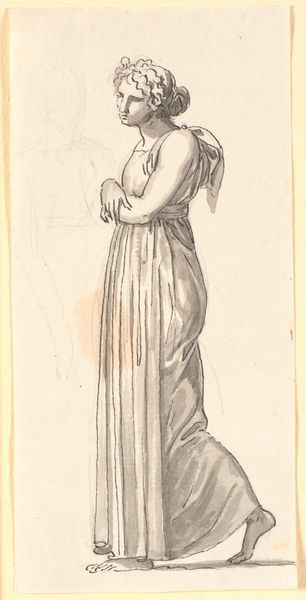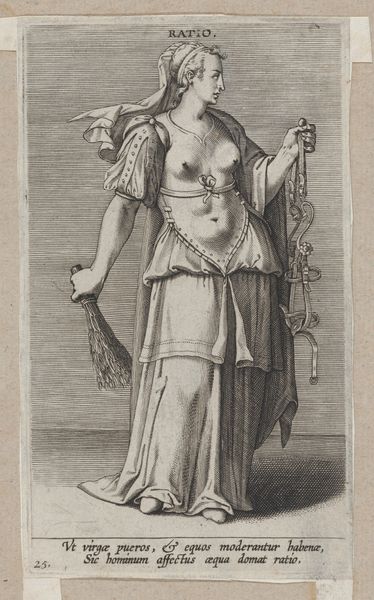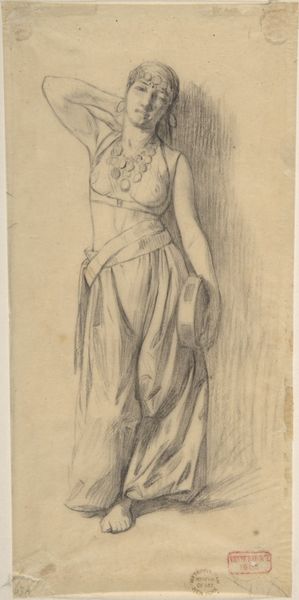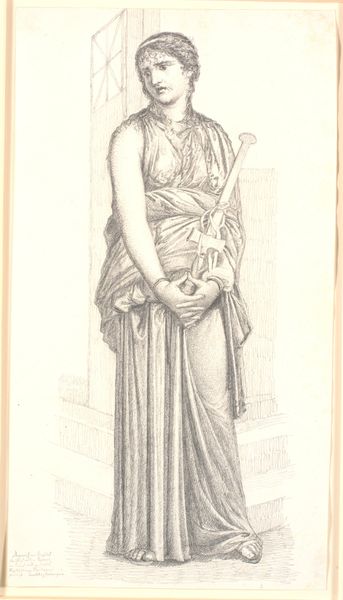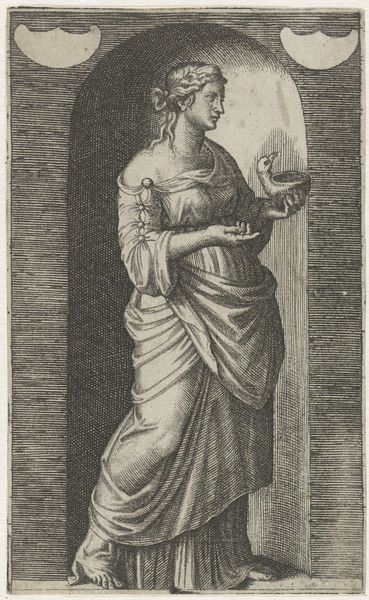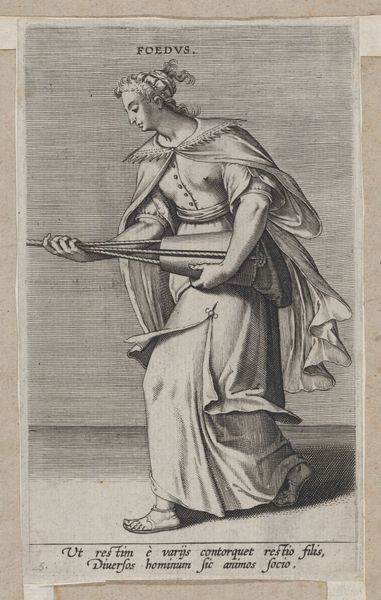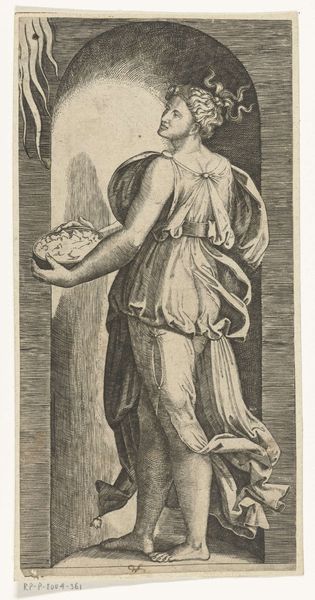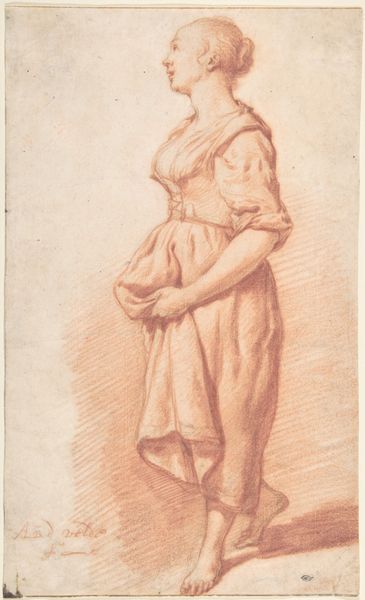
Fortitude or Strength personified by a woman standing in a nice resting her arm on a column, from 'The Virtues' 1510 - 1520
0:00
0:00
drawing, print, engraving
#
drawing
# print
#
figuration
#
pencil drawing
#
italian-renaissance
#
nude
#
engraving
Dimensions: Plate: 8 7/16 × 4 1/4 in. (21.5 × 10.8 cm) Sheet: 16 1/16 × 10 13/16 in. (40.8 × 27.5 cm)
Copyright: Public Domain
Editor: So, here we have "Fortitude" by Marcantonio Raimondi, created sometime between 1510 and 1520. It’s an engraving, showing a woman personifying strength, leaning casually on a column. I'm struck by the artist's detailed rendering of the fabric. What do you see in this piece? Curator: What interests me immediately is the process of reproduction itself. Raimondi was instrumental in popularizing engraving, which democratized art through multiplication. Think about the socio-economic implications: images previously confined to the wealthy could now circulate more widely. How does this shift in material accessibility challenge traditional notions of artistic value, tied as they were to uniqueness and authorship? Editor: That’s fascinating! I hadn’t thought about the printmaking process that way, more in terms of copying famous paintings. But if prints are a commodity, does that change our understanding of the subject? Does “Fortitude” become something you can buy, possess, and therefore *use*, rather than just admire? Curator: Precisely! We have to consider the relationship between production, consumption, and meaning. Engravings like this weren't simply aesthetic objects; they were commodities embedded in a developing market. Did the act of owning a print of 'Fortitude' influence the owner’s understanding or performance of that virtue, linking it to the emerging capitalist ideals? Editor: It gives new meaning to "possessing" a virtue! So, rather than just looking at the image, we’re examining the material conditions that allowed the image to exist and circulate. Curator: Exactly. It's not simply *what* is depicted, but *how* it was made and *who* had access to it that truly shapes the work’s impact. Considering these material factors can unlock a far richer understanding. Editor: I'll definitely look at art differently now. It’s not just the subject, but also about production and access and even economics. Thanks!
Comments
No comments
Be the first to comment and join the conversation on the ultimate creative platform.
